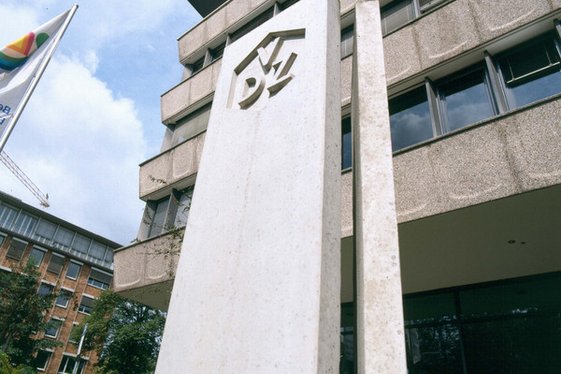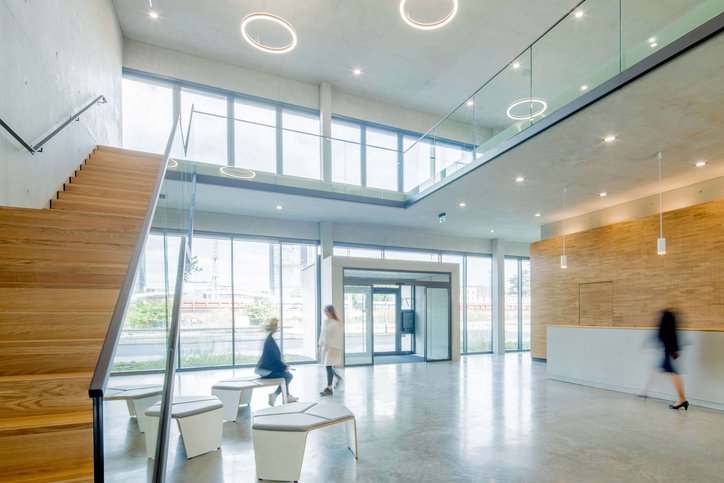VDZ's range of topics and fields of activity has been constantly expanding and changing throughout its history, which spans more than 140 years. The essential motivation of the cement producers in joining together into an association was however the hitherto inconsistent quality level of the cement. At that time, there were no consistent standard testing procedures. Today, its activities represent the economic, technical and scientific interests of the German cement industry.
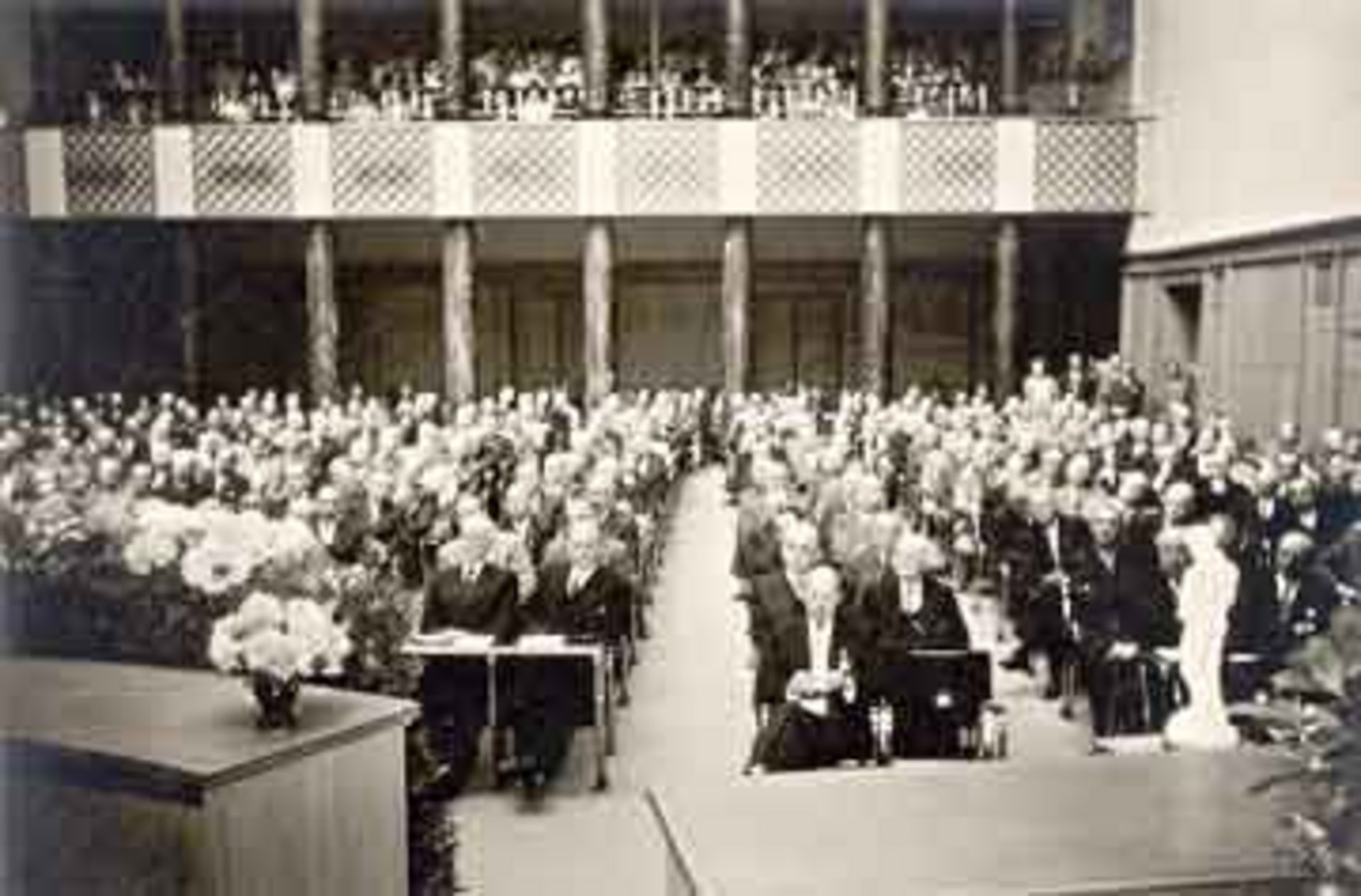
Quality and Progress for 140 years
With the start of industrial cement production in Germany, in January 1877 the founding members of the „Association of German Cement Manufacturers“ joined together into an independent common interest group. The main focus of the joint work, even in the initial years, was already on technical questions.
The composition issue
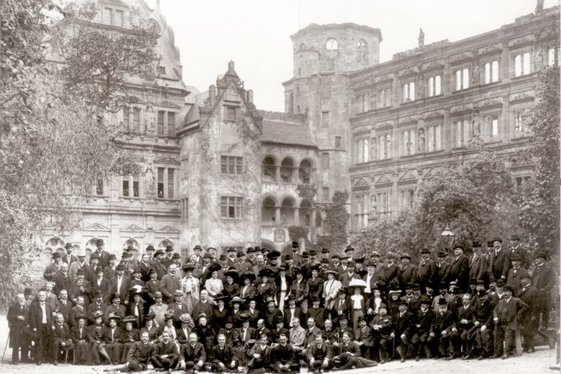
1908
General meeting in Heidelberg
In the first years of its existence, the „Association of German Cement Manufacturers“ was already working out guidelines for the testing and delivery of Portland cement. As early as 1878, the first Cement Standard was published on this basis. Very rapidly, Portland cement became an established term. It stood for quality and was priced accordingly.
1945
Letterhead of VDPCF
Through the constant improvement of the production process, as the years passed cement of ever higher quality was produced. It exceeded the strength requirements of the standard to an ever greater degree. At the same time, experiments showed that as well.
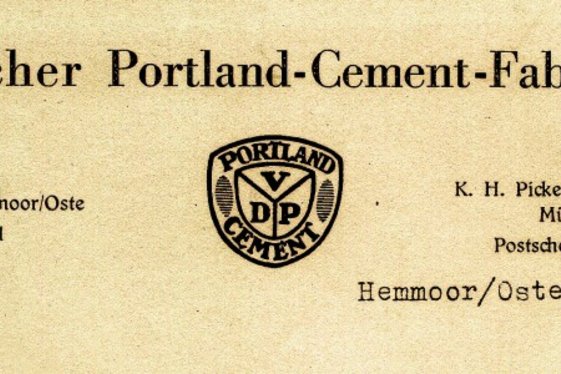
1950s reconstruction euphoria
In May 1949, the first members’ meeting of the Association founded again after the war took place. At the same time, the work in the partly destroyed Research Institute was taken up again. In accordance with the statutes, the Association undertook the monitoring of its members’ cements according to the German cement standard DIN 1164.
After four years of successful joint work, the new Association changed its name to „Verein Deutscher Zementwerke e.V.“ (German Cement Works Association). The purpose of this was to highlight the successful merging of the different fields of interest. The board members now no longer came proportionately from the different branches of the cement industry but instead represented the cement-producing regions of Germany.
In 1948, the work of the Association was subdivided into the following working committees: the laboratory committee, responsible for test procedures and cement processing, the raw material committee with the fields raw materials and hydraulic additives, and the technical committee. At the members’ meeting in 1954 it was decided also to establish the concrete technology committee. The involve-ment of the factories in the studies is to this day an essential feature of the joint work.
In 1958, at the members’ meeting in Baden-Baden, the Association celebrated the 10th anniversary of its refoundation. In April 1973, 25 years had passed since the Association had founded itself again after the war. This 25-year reunion provided an occasion to look back on a remarkable reconstruction achievement.
From upswing to recession
In the 50s and 60s, the construction boom in Germany led to a continual rise in cement shipments. Tough market confrontations in the Westphalia region, the two so-called Westphalian cement wars, and the recession that set in with the 1973 oil crisis, reduced the number of cement companies in Germany. As a consequence, the number of members in the Association fell from 70 in 1966 to 49 in 1975.
At this time a major focus of the joint work concerned the reduction of the energy consumption during cement manufacture. Kilns operating by the wet process were closed down in the 1960s and 70s. In the 1970s, the kiln capacity was increased from 350 to 2400 tons/day on average. In 1977, at a South German works, Europe’s largest suspension type preheater until then came on stream at 4000 tons/day. Today, clinker kilns mainly operate by the dry process. New installations are constructed exclusively as cyclone preheater kilns with calciner, tertiary air duct and grate coolers.
Environmental protection as Association objective
As early as the 1930s, the dust committee was founded in the Association. In 1950, a dust measuring station was set up, from which the so-called emissions monitoring department subsequently derived. Also among its responsibilities was noise abatement and questions relating to vibrations after explosions in quarrying operations.
In 1950, the dust emission from rotary cement kilns was still about 3 - 5 percent of production. In the subsequent decades, the dust emission was drastically reduced. By now, the daily average emission level for dusts in the exhaust gas from rotary kilns is down to 10 - 30 mg/m3.
Today the Research Institute is available to the cement factories and other industries for the testing of environmental legal conditions right up to complete environmental impact audits. The institute is recognised as a notified monitoring body according to the Federal Ambient Pollution Protection law. The scope of the notification covers all fields relevant to the cement industry. This includes the determination of the emissions of inorganic gases, dusts, dust components and chemical compounds adsorbed on dust, and also the emissions of organic chemical and highly toxic organic chemical compounds in extremely low concentrations (dioxins and furans).
Control is better
As evidence of conformity with the European cement standard EN 197-1 and as a precondition for free trade in Europe, manufacturers label their cements with the European CE mark.
The VDZ Quality Surveillance Organisation is notified in accordance with the Construction Products Directive. Hence the VDZ can offer its services as a notified body throughout Europe. The accreditation of the laboratories as well as the notified body was successfully concluded in 2002. At present, over 500 cements and cement-like binders from 67 factories are tested in accordance with German and to some extent also with foreign rules. Of these, by now about 330 cements have received certificates in accordance with EN 197-1.
Safety at work
In 1968, an accident prevention commission was formed, which could be called upon by the factories for advice free of charge. A safety at work study group dealt with safety instruction leaflets. It also organised competitions which singled out the three companies with the lowest accident figures and distribute plaques. The result of this Association activity was plain to see. In the course of 30 years, the accident frequency rate and the mean annual capacity loss sank by about two thirds. Furthermore, there were intensive courses for industrial foremen so that these could properly fulfil their role in setting a good example as regards safety at work.

Scholarships for young people
The long-standing chief executive of the VDZ, Prof. Dr.-Ing. Gerd Wischers succeeded in forging a link between the chemical-mineralogical and physical behaviour of cement paste and hardened cement paste and the usage properties of concrete.
One year after the death of Prof. Wischers, the Association created the Gerd Wischers Foundation. Since 1995, it has been nurturing young scientists as new blood for the cement industry. Among the first research topics was a diploma study on the effect of cement kiln dusts on strength and phase development in cement hydration. Other studies were concerned with self-compacting concrete and the alkali balance of the pore solution in the hardened cement.
In 2002, the first scholar did a doctorate on the use of cement-bound mortar systems in the drinking water field. The funding is open to young people from this country and abroad, who wish to work on a research topic in the field of cement manufacture or cement utilisation.
Research institute of the cement industry
A scientific institution with an international reputation, the German Cement Works Association (VDZ) has been known for its practical research and extensive portfolio of services involving cement and concrete for 140 years. The Research Institute of the Cement Industry has been based in Düsseldorf, since 1956, forming a world-unique competence centre for cement, concrete and hydraulic binding agents.
